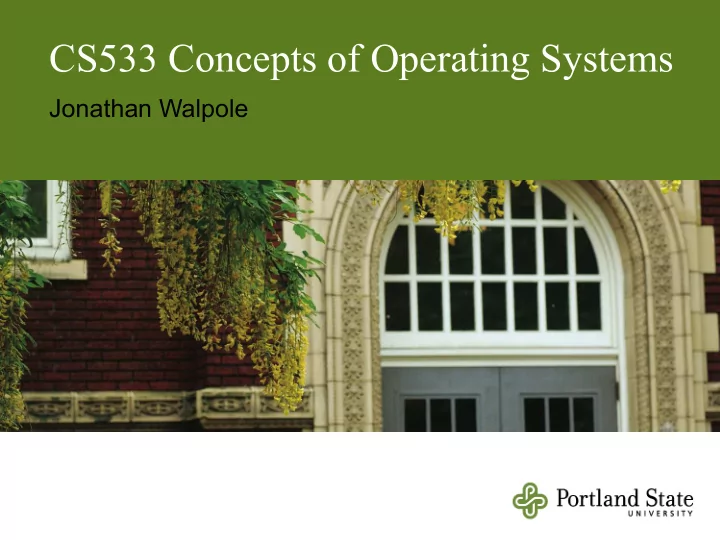

CS533 Concepts of Operating Systems Jonathan Walpole
Exokernel An Operating System Architecture for Application-Level Resource Management
Operating Systems Purpose Users don’t want to run an OS They want to run applications We should design OS kernels with application needs in mind
What Do Applications Need? Protection from other applications Services Access to hardware that may require privilege
How Good Is The OS? How are services provided? How fast are the services? How well do they match application needs?
What’s Wrong With Monolithic OS? All services built into the kernel No internal protection boundaries Internal operation is fast, but system calls are quite expensive One size fits all services Abstractions may not be suitable, and they impair efficiency
What’s Wrong With Microkernels? Minimal kernel is good Lower-level abstractions are an improvement Extensibility is good Potential for protection and fault isolation Boundary crossing via IPC is expensive Minimal abstraction is an oxymoron
Exokernel Secure hardware multiplexor Expose hardware, don’t abstract it Don’t virtualize it either! Kernel validates access The rest of the OS is in a library
Resource Allocation Library OS requests specific resources Page frames, disk blocks, time slices … Exokernel exposes resource names No hidden allocation (no virtualization) All mechanism, no policy
Visible Revocation Exokernel asks for resources to be returned i.e. free a page Library OS chooses what to free Revocation is forced if library OS is not responsive
Multiplexed Hardware CPU Interrupts Memory DMA Disk Network
CPU Resource: linear time vector Mechanism: expose timer interrupts Granularity: time slices Library OS reserves future time slices Context switching implemented by library OS Similar to scheduler activations
Physical Memory Resource: linear physical memory Mechanism: safely expose TLB & page tables Library OS requests pages Exokernel validates access
Network Resource: incoming data stream Mechanism: packet filter Filters compiled into machine code by exokernel Filters safely colocated with the Exokernel
Protected Control Transfer Client transfers control to predefined server entry point Client donates scheduling time slice That’s it! … only 30 instructions Exokernel provides the minimal mechanism Could build RPC, IPC, on top of this … or not
Library Operating Systems Reside in application address space Use exokernel interfaces Exokernel invocation takes 18 instructions Invocation of library OS from applications is a procedure call OS specifically tuned for application needs
Conclusion Don’t abstract or virtualize, its inefficient! Just provide secure hardware multiplexing Expose physical resources Expose names, allocation and revocation OS should provide minimal mechanism, not policy
Recommend
More recommend